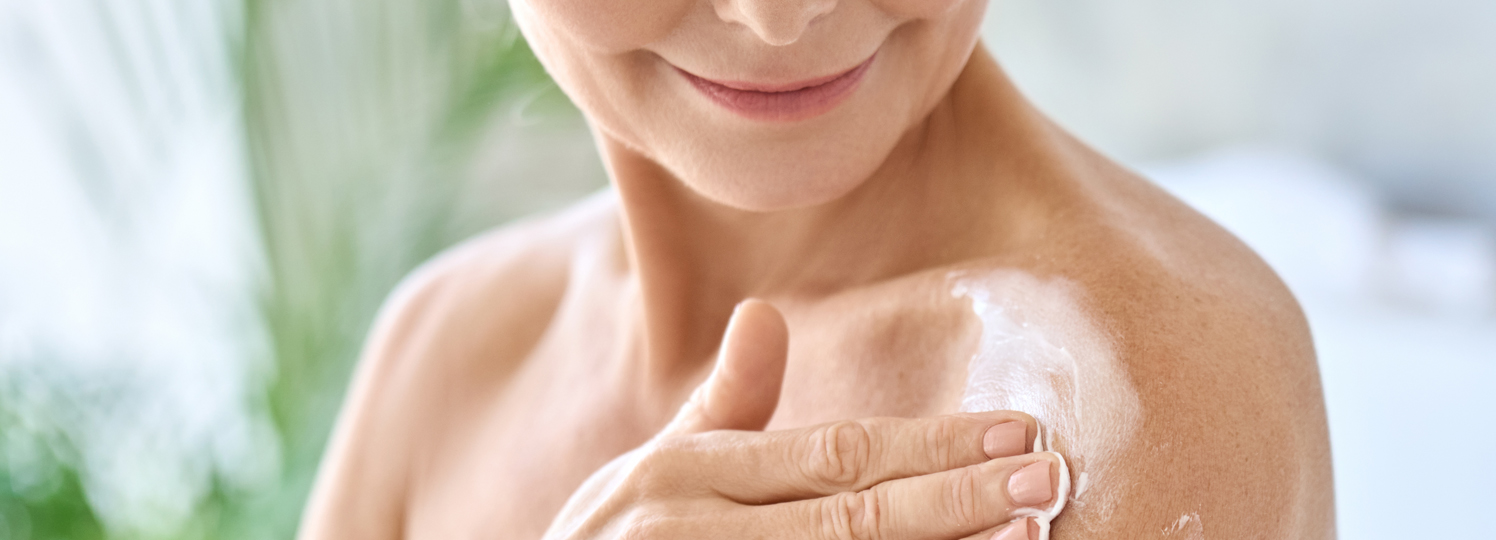

Body Care


Body Care
Rich but not greasy cream for protecting the delicate skin of the lips. Vitamin E, Prolin and Hyaluronic Acid guarantee a long lasting care effect and a protecion against dryness both in cold and warm weather.
Aqua, Caprylic/Capric Triglyceride, Vegetable Oil, Glycerin, Alcohol, Glyceryl Stearate, Hydrogenated Phosphatidylcholine, Urea, Panthenol, Stearyl Alcohol, D-mixed-Tocopherols, Lactic Acid, Sodium Hyaluronate, Allantoin, Citric Acid, Sodium Hydroxide
Aqua:
Water. It accounts for around 65% of the weight of the human body and is therefore of fundamental importance for bodily functions, including those of the skin. In many cosmetic products (aqueous solutions, cleansers, emulsions), water is the ingredient with the largest proportion of the formulation in terms of quantity and forms the basis of the aqueous phase in emulsions. Water is a good solvent for polar (hydrophilic) substances such as alcohols, water-soluble vitamins or salts. For use in cosmetic products, the water used is generally pre-treated to remove microorganisms that could lead to spoilage of the product or dissolved salts that may impair the stability of emulsions or gels (sterilization and desalination).
Caprylic/Capric Triglyceride:
Vegetable neutral oil (triglyceride) with short-chain fatty acids. Has moisturizing properties.
Vegetable Oil:
Skin-identical base oil made from vegetable raw materials, also labelled as Olus Oil.
Alcohol:
Ethyl alcohol: Body identical. Has a refreshing and antibacterial effect. Also serves as a solvent for other ingredients. Contrary to claims to the contrary, there is no risk of a drying effect on the skin at normal application concentrations!
Glyceryl Stearate:
Is a component of sebum, partially saponified fat, skin-protecting and moisturizing properties, consistency regulator and auxiliary emulsifier for lotions and creams.
Hydrogenated Phosphatidylcholine:
A phospholipid produced by the body.
Urea:
The water-soluble urea is used in numerous cosmetic products. Urea is a component of the natural moisturising factors of the horny layer (content between 7 % and 12 %; up to half lower in chronically dry skin) and has a high water-binding capacity. It contributes to sustained moisturisation of the skin and reduces transepidermal water loss. Urea has a keratoplastic effect, in higher concentrations it has a keratolytic effect and is therefore also used in the care of skin affected by psoriasis or atopic dermatitis (neurodermatitis). Urea is also able to reduce the irritating potential of surfactants.
Panthenol:
D-panthenol = provitamin B5: Improves and increases the skin's ability to retain moisture, has an anti-inflammatory effect, reduces or inhibits itching. Stimulation of epithelialization: Small wounds (shaving), skin abrasions, blisters heal better. When used in hair care products, it is not only deposited on the hair and scalp, it also penetrates them and has a long-term effect. As pantothenic acid is an important component of healthy hair, the precursor D-panthenol serves as “food for the hair” according to scientific studies. It provides the hair with long-lasting moisture, improves the combability of the hair, reduces the formation of split ends, improves the condition of damaged hair, thickens the hair and gives it shine. The brittleness of fingernails is reduced.
Stearyl Alcohol:
A body-identical fatty alcohol, occurs as an intermediate product in fat metabolism, also present in small quantities in the epidermis. Provides consistency in emulsions.
D-mixed-Tocopherols:
Is the name of a mixture of natural tocopherols (vitamin E; D-alpha-, beta-, gamma- and delta-tocopherol). Vitamin E is the most important skin protection vitamin, which protects the skin from UV rays and oxygen radicals.
Lactic Acid:
Lactic acid. Occurs as a metabolic product in the body and on the skin, has a peeling effect on the horny layer in higher concentrations and at a low pH value of 2 to 3, supports the moisture content in buffered form (physiological pH value of the skin approx. 5.5) and preserves the skin's protective acid mantle.
Sodium Hyaluronate:
Sodium salt of hyaluronic acid. Natural moisturiser with skin-smoothing properties, important natural component of the lower skin layers (dermis). Formerly produced from rooster combs, now produced in better quality by biotechnology.
Allantoin:
Allantoin is a body-identical, water-soluble substance and is chemically related to urea. It is found in various plants but is now produced synthetically for use in cosmetics. Its most important property is the stimulation of new cell formation. It promotes collagen formation, skin regeneration and wound healing, stimulates desquamation, smoothes the skin and can have a soothing effect on atopic dermatitis.
Citric Acid:
Citric acid. Biotechnologically produced body-identical active ingredient. Occurs in the metabolism of the human organism and can also be found in low concentrations on the skin. It protects the skin from oxidative stress, supports the product protection of the antioxidants and regulates the pH value of the product.
Sodium Hydroxide:
Sodium hydroxide. Used to adjust the pH value of cosmetic products. Sodium and hydroxide ions are identical to the body.